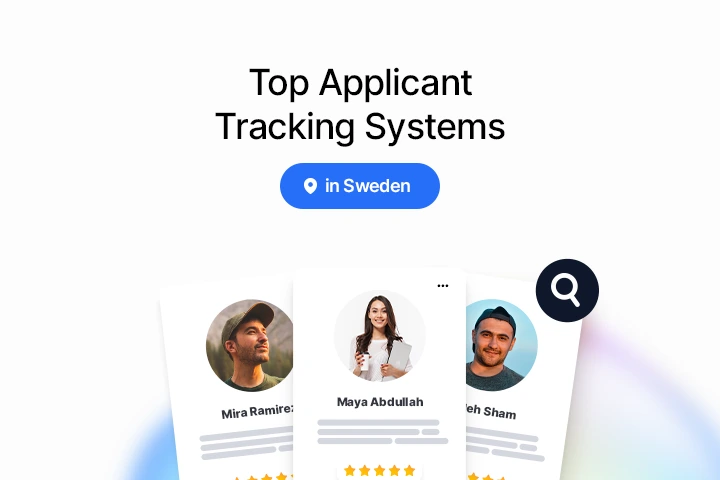HR professionals and recruiters face many challenges when growing a team. Other than the usual struggles of finding the right person for a role, there is a struggle of building a team that is diverse and inclusive. But why is diversity so important, especially in 2026?
Also Read: Stats on Social Media Recruitment you can’t miss!
Understanding Workplace Diversity
Workplace diversity is a broad idea and refers to differences among people in an organization. Some key aspects of workplace diversity include gender, race & ethnicity, culture, religion, and cognitive & physical ability.
These differences can encompass various attributes, experiences, and backgrounds. Embracing workplace diversity involves recognizing and valuing these differences to create an inclusive and supportive work environment where all employees are treated fairly and respectfully. HR professionals & recruiters must consider various types of workplace diversity to foster an inclusive workplace culture.
Here are the top 3 reasons why you must prioritize diversity in your recruitment strategy:
1. A company with diverse management or leadership produces more revenue by 19% (Growthforce).
2. Companies with a higher gender diversity will outperform organizations with lesser gender diversity (Morgan Stanley).
3. 3 out of 4 jobseekers prefer companies with a diverse workforce (Glassdoor).
Also Read: What is Age-discrimination?
Gender Diversity in the Workplace Statistics
Gender diversity refers to the equal representation of men and women in the workplace. HR professionals & recruiters must prioritize gender inclusivity to promote gender equality, address gender biases, and ensure equal opportunities for all employees. However, as idealistic as gender equality in the workplace sounds, it is not always the case. Female employees suffer from hiring bias or unequal compensation even today.
Let’s go over some statistics that emphasize the need to build more gender-inclusive recruitment strategies.
- Male candidates are twice as likely to get hired for a role as female candidates (PNAS).
- Only 8.8% of professionals who have made it to the list of the Future 500 CEOs are females (PR Newswire).
- There is an average gender pay gap of 17% worldwide, which reflects women getting paid less than their male counterparts in similar professional roles (Forbes).
- Only 23% of women make it to the top managerial positions at a company, which are the C-suite category roles (Catalyst).
Despite the stats that highlight an unfair advantage male professionals have over their female counterparts, companies are beginning to realize the importance of fostering a gender-inclusive environment that empowers all employees to emerge as stronger professionals. Companies that prioritize gender inclusivity have shown to have an overall better business performance.
Let us discuss some stats that show how gender-inclusive companies benefit from hiring a gender-balanced workforce.
- 85% of CEOs with a diverse workforce report maximum profit (Apollo Technical).
- Teams with gender-diverse executives are more profitable by 21% than non-diverse teams (Harvard Business).
- Companies that employ an equal number of male and female employees produce a higher revenue by 41% compared to those that don't (Exude).
- Companies with a gender-diverse workforce have 15% higher financial returns than non-gender-diverse companies (McKinsey).
It is evident that a gender-diverse workforce is a crucial contributor to business success and increased revenue. However, 40% of professionals agree that there is a bias against women in the workplace, which can harm an organization's overall reputation and performance. Recruiters and HR professionals must employ recruitment and selection strategies that attract and retain both genders. This will not only boost their organization's overall performance but also have a significant impact on the overall well-being of society. And guess what? Employing both men and women can boost a country’s GDP by 26%!

Also Read: Resume stats to remember before applying for a job!
Ethnic Diversity in the Workplace Statistics
Ethnic & cultural diversity is important as it encourages employees from various cultural backgrounds, religions, and nationalities to share their unique perspectives to foster productivity and growth. HR professionals must promote cultural awareness & inclusivity to create a workplace environment that respects and values diverse cultural perspectives.
Companies that prioritize cultural and ethnic diversity stand out from those that don’t and show better performance & growth. Let’s look at some statistics to understand why cultural and ethnic diversity is crucial for implementing your recruitment strategy:
- Ethnic & racially diverse companies outperform their competitors by 35% (McKinsey).
- Companies with a diverse workforce are more likely to capture new markets by 70% (Harvard Business).
- A diverse team is more likely to make better decisions by 80% compared to a non-diverse team (People Management).
- 69% of professionals consider diversity & inclusion a significant concern (Glassdoor).
- 74% of millennial employees believe companies are more innovative when culturally inclusive (Edume).
- 47% of job seekers prioritize diversity and inclusion when considering potential employers (Deloitte).
- 37% of job seekers and employees would not consider applying for a job with a company with an unfavorable image among people of color (HR University).
Companies that prioritize cultural and ethnic diversity in their recruitment strategy are shown to have better performance, productivity, and profits. A company that can hire, retain, and engage employees from different ethnicities and cultures stands out for creating a harmonious work environment that is very attractive to potential clients, investors, and even job seekers. Having a diverse team is a great way to benefit from the knowledge and experience each member brings from their unique cultural background and utilize it for the overall benefit of the company.

Also read: Stats to know about Job Interviews
Ability Diversity in the Workplace Statistics
Ability diversity refers to including differently-abled employees in the workplace to ensure that everyone, regardless of any ability challenges, is given equal opportunity to excel professionally. It is one of the most important recruitment diversity strategies for companies to implement, especially those aiming to build a reputation for being all-inclusive.
Differently-abled or job-seekers with physical or cognitive disabilities suffer from a lack of opportunity and easy access to jobs. A study by SHRM shows that 8.2% of differently-abled people aged 16 to 64 were unemployed in 2022. Moreover, a report by the United Nations states that most developed countries show an unemployment rate for differently-abled persons of working age to be two times higher than those who have no disability. Employers and recruiters must consider ability diversity an important aspect of their recruitment strategy because it reflects the representation of various segments of society and fosters a sense of equity and opportunity amongst the workforce.
There are several benefits of engaging an ability-diverse workforce, especially when looking to build a stronger employer brand and access governmental benefits. Let’s review some important stats that highlight the significance of hiring and retaining an ability-diverse workforce:
- Employees with an inclusive workforce exhibit a strong sense of belonging to the organization, and there is a 50% lower risk of turnover and a 56% increase in job performance (Harvard Business Review).
- Cognitive diversity can enhance team innovation by up to 20% (Deloitte).
- Companies that employ differently-abled persons generate revenue that is 28% higher, twice the net income, and 30% higher profit margins than those who don’t (Business).

Summary
The future of workplace diversity is brighter than ever. Companies are becoming increasingly aware of the significant impact of hiring from all segments of society and are encouraging recruiters and HR professionals to prioritize diversity in their recruitment framework. With the notions of freedom of expression and choice becoming increasingly common, especially amongst the Gen-Z, companies must note that fostering an inclusive work environment is the only way forward.
With a more inclusive and diverse workforce, employers have to prepare for newer challenges, like maintaining a respectful and considerate workplace culture that values the uniqueness of every employee. Employers and recruiters can win over their employees by ensuring that every employee, with their uniqueness and specific representation of a social segment, is valued and recognized equally!




